“Wildlife Health” is more than just the absence of disease—it is the ability of wildlife to thrive in a changing environment. The health and resiliency of wildlife is influenced by many factors such as genetics, physiological capacity, disease status, exposure to environmental threats, interactions with human populations, and climate. A healthy environment that includes thriving, resilient wild animal populations is in turn fundamental to the health and socioeconomic well being of humans.
Addressing these emerging issues in wildlife health requires a progressive organization capable of crossing geographic, taxonomic, and disciplinary barriers. BRI’s Wildlife Health Program collaborates with a wide range of professionals to provide veterinary expertise in support of governmental and non-governmental organizations, universities, and research facilities.
Field Surgery Capabilities

BRI’s Wildlife Health Program offers mobile surgical and anesthesia services for procedures such as internal transmitter implantation in avian and mammalian species. BRI’s veterinarians specialize in surgical implantation of satellite transmitters in a variety of avian species, including:
- Surf Scoters
- White-winged Scoters
- Long-tailed Ducks
- Common Eiders in Maine and Massachusetts
- Red-throated Loons
- Northern Gannets
Fully equipped to offer the highest standard of veterinary care, our mobile surgical capabilities include gas anesthesia, respiratory and cardiac monitoring, sterile technique, and comprehensive pain management. BRI’s veterinary team holds animal welfare as a top priority, following Institutional Animal Care and Use Committee approved protocols to ensure the best treatment of each animal and making every effort to minimize stress and discomfort.
Veterinary Services for Field Work
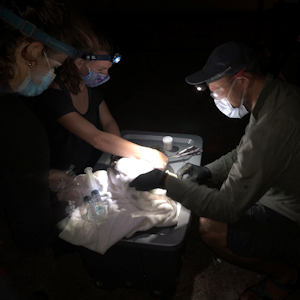
BRI’s wildlife veterinarians have extensive field experience working in a variety of locations across North America and internationally. Our veterinarians can offer assistance with a variety of field needs, including:
- Safe and humane capture/handling of wildlife
- Obtaining blood and other samples
- Best practices for sample handling and storage
- Health assessment of captured animals
- Veterinary oversight for translocation/captive rearing projects
- Training for field staff
- Field necropsy
Project Consultation
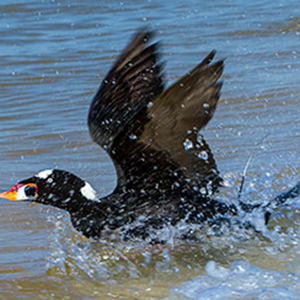
BRI’s wildlife veterinarians can assist with the planning and implementation of wildlife research and conservation projects. BRI’s veterinarians can work with biologists to develop a health assessment plan that is “custom designed” for each project or species.
IACUC Protocol Development
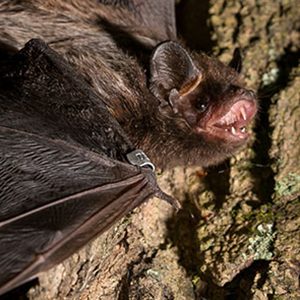
Institutional Animal Care and Use Committee (IACUC) approval is an increasingly important part of wildlife research. IACUC oversight of studies involving free-ranging wildlife presents a unique set of challenges for both reviewers and researchers. BRI’s wildlife veterinarians serve as IACUC members through the University of Southern Maine, and are experienced with the many considerations necessary for humane, ethical, and legal conduct of wildlife research. We can assist researchers with protocol development for IACUC review, ensuring all relevant guidelines and requirements are met.
Wildlife Necropsy
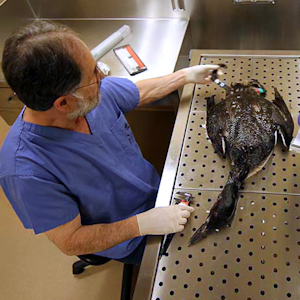
Post-mortem examination (necropsy) of deceased animals is a critical procedure for identifying causes of mortality and collecting tissue samples for further toxicological and disease testing. The vital information gained through necropsy examination can help guide conservation efforts, diseases surveillance, and future research.
BRI’s Wildlife Health Program offers in-house necropsy services through our Wildlife Pathology Lab, and our veterinarians can also provide on-site necropsy of larger species as well as training for biologists. By partnering with board-certified veterinary pathologists at collaborating institutions, we are able to expand our diagnostic capabilities for high-priority cases.
Wildlife Epidemiology
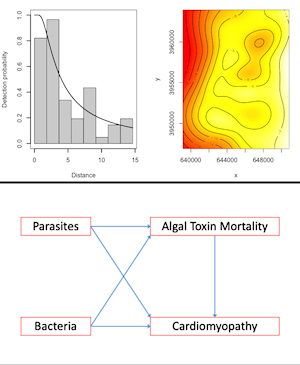
Wildlife epidemiology is the science of understanding health and disease in animal populations (rather than just individual animals). Wildlife epidemiology helps us understand the causes of novel wildlife health problems, determine the importance of health threats to conservation planning and even to understand and manage the risks posed to animal and human health by movement or transport of animals and pathogens around the world.
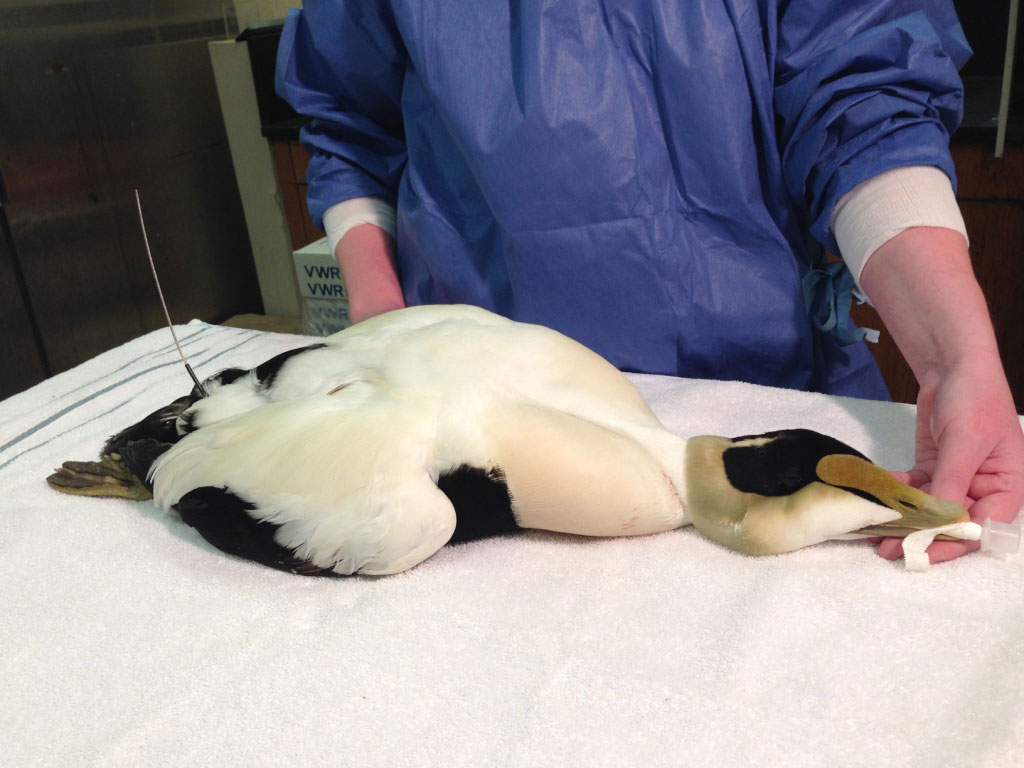
Photo Credits: Header image © Jesse Costa; Field surgery © BRI; Veterinary Services, loon exam © BRI-Lucas Savoy; Banded bat © BRI-Jonathan Fiely; Wildlife Necropsy © BRI; Wildlife epidemiology charts © Tristan Burgess



